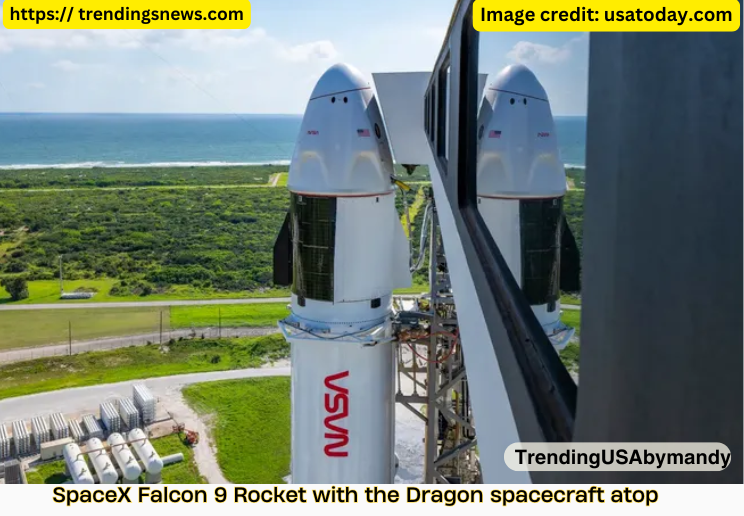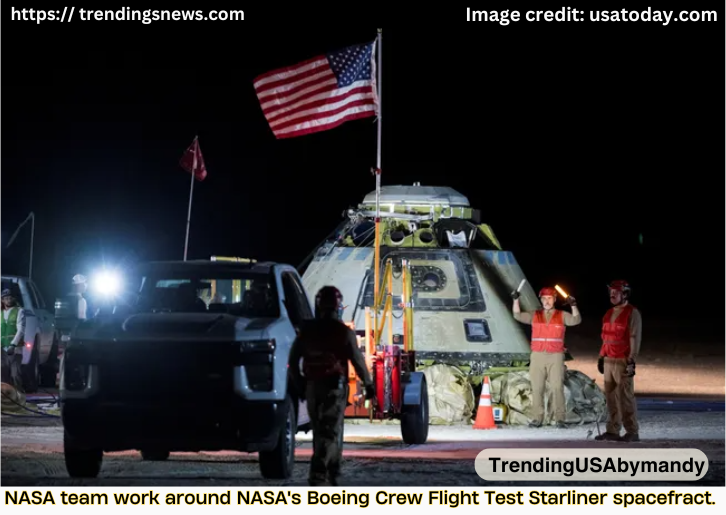NASA Starliner SpaceX Crew astronauts return 2025: The NASA Starliner SpaceX Crew astronauts are set to return in March 2023.
After a prolonged stay at the ISS, Suni Williams and Butch Wilmore’s long-awaited homecoming marks a new milestone in space travel.
Introduction to NASA Starliner SpaceX Crew Astronauts Return 2025
The NASA Starliner SpaceX Crew astronauts return 2025 mission is one of the most highly anticipated events in recent space exploration history.
Astronauts Suni Williams and Butch Wilmore, who flew aboard the Boeing Starliner for its first crewed flight test back in June, are now poised to return to Earth after months of delays.
Their highly anticipated homecoming is set for March 2025, and while the exact date of their return isn’t set yet, this marks a pivotal moment in NASA’s ongoing efforts to develop and deploy commercial spacecraft to the International Space Station (ISS).
In this article, we will dive deep into the details of this mission, exploring the astronauts’ journey, the obstacles they faced, and the space agencies’ efforts to bring them home safely.
Let’s take a closer look at what happened, the challenges along the way, and how space exploration continues to evolve.
The Mission’s Objective and Timeline
The NASA Starliner SpaceX Crew astronauts return 2025 mission was designed as a pivotal part of NASA’s Commercial Crew Program.
The mission’s primary goal was to test Boeing’s Starliner spacecraft, alongside SpaceX’s Dragon capsule, for transporting astronauts to and from the International Space Station (ISS).
While the mission’s purpose was initially to last 10 days, unexpected technical issues with the Starliner’s systems resulted in a delay of the return of the astronauts.

The Start of the Mission
The mission started in June 2023, when Suni Williams and Butch Wilmore launched aboard the Boeing Starliner, marking the first crewed test flight of the spacecraft.
Initially, the mission was expected to last 10 days, with the astronauts conducting various tests and experiments onboard the ISS.
However, after their arrival at the ISS, the astronauts had to extend their stay due to the technical difficulties encountered by the spacecraft.
Challenges Encountered
Throughout their time at the ISS, Suni Williams and Butch Wilmore faced multiple challenges related to the Starliner’s systems.
There were reports of helium leaks and issues within the spacecraft’s propulsion system, which led NASA officials to change the course of the mission.
Instead of having the astronauts return on the Starliner, NASA decided to send them back on a SpaceX Dragon capsule.
The decision was not only based on technical concerns but also to ensure that the astronauts would return to Earth safely and within a reasonable timeframe.
The Astronauts’ Experience in Space
Life Aboard the ISS
During their extended stay at the ISS, Suni Williams and Butch Wilmore had to adapt to life aboard the space station.
The ISS is a microgravity environment, so tasks like eating, sleeping, and moving around required special adaptations.
Nutrition and Health
Food and water were provided by NASA’s resupply missions, but astronauts had to rely on carefully prepared space food, which is lightweight, dehydrated, and specially designed for space.
For the astronauts, re-hydrated meals and snacks were the primary sources of sustenance, while water was supplied via specialized containers designed for use in microgravity.
Long-term stays in space, especially under microgravity, can have significant health effects on astronauts.
Muscle atrophy, bone loss, and cardiovascular changes are common due to the absence of gravity.
These effects are closely monitored by medical teams on Earth, ensuring that astronauts remain in peak physical condition, even in space.

Psychological Effects of Extended Space Travel
Being in space for an extended period can have psychological impacts, too.
Suni Williams and Butch Wilmore, like many astronauts before them, had to deal with isolation, confinement, and the mental stress of being away from their families and the Earth.
The psychological effects of space travel are carefully monitored, and astronauts undergo training to cope with the mental strain of living in such conditions.

The NASA Starliner SpaceX Crew astronauts return 2025: The Plan
Transition to the SpaceX Dragon Capsule
While initially planned for a return aboard the Starliner, NASA decided to use the SpaceX Dragon capsule for the return journey.
The Dragon had already been docked at the ISS since late September 2023, carrying the Crew-9 astronauts.
This capsule, previously flown and proven, was deemed a safer option for bringing the astronauts back.
Timing and Arrival of Crew-10
The return process was intricately planned, as the Crew-9 astronauts had to be replaced by the Crew-10 team, arriving aboard another SpaceX Dragon capsule.
Once Crew-10 arrived, handover activities between the two crews would occur, allowing Williams and Wilmore to prepare for their return to Earth.
The Crew-10 mission, launched aboard a SpaceX Falcon 9 rocket from NASA’s Kennedy Space Center in Florida, was scheduled for March 12, 2025.
After their arrival at the ISS, the two teams would undergo handover procedures, with Williams and Wilmore ready to depart afterward.
Looking Ahead – The Impact of the Return on Future Space Missions
The NASA Starliner SpaceX Crew astronauts return 2025 marks a significant milestone in the broader context of space exploration, showcasing the collaboration between NASA, Boeing, and SpaceX to push the boundaries of human spaceflight.
This mission represents the culmination of years of development and testing of commercial spacecraft like the Boeing Starliner and SpaceX Dragon.
SpaceX’s Role in the Future of Space Travel
SpaceX’s involvement in the NASA Starliner SpaceX Crew astronauts return 2025 mission demonstrates its crucial role in the future of space exploration.
While the Starliner faced setbacks, SpaceX’s Dragon capsule provided the necessary backup.
This event reaffirms the importance of having multiple spacecraft options for the transportation of astronauts to and from the ISS.
The Future of NASA and Space Exploration
NASA’s continued partnership with private companies like SpaceX and Boeing is reshaping the future of space travel.
These partnerships allow for the development of innovative spacecraft while also reducing costs.
Furthermore, these advancements could pave the way for missions to the Moon, Mars, and beyond.
The NASA Starliner SpaceX Crew astronauts return 2025 mission highlights how the space agency and its commercial partners work together to overcome challenges and achieve their goals.
Looking ahead, the next generation of spacecraft will likely take astronauts further into space, with a particular focus on sustainability and long-duration space missions.
NASA’s Mission to the Moon in 2024
In 2024, NASA is set to take another giant leap with its NASA Nokia 4G lunar mission.
This mission aims to establish the first 4G cellular network on the Moon, which will provide essential communication infrastructure for future lunar missions.
By deploying a cellular network on the Moon, NASA will help astronauts communicate in real-time and share data, which is crucial for future missions to the Moon, Mars, and beyond.
As the NASA Starliner SpaceX Crew astronauts return 2025, NASA’s vision for space exploration is expanding beyond low Earth orbit, pushing the boundaries of technology and human exploration.


1 thought on “NASA Starliner SpaceX Crew Astronauts Return 2025 | A Triumph of Innovation and Human Resilience in Space Exploration”